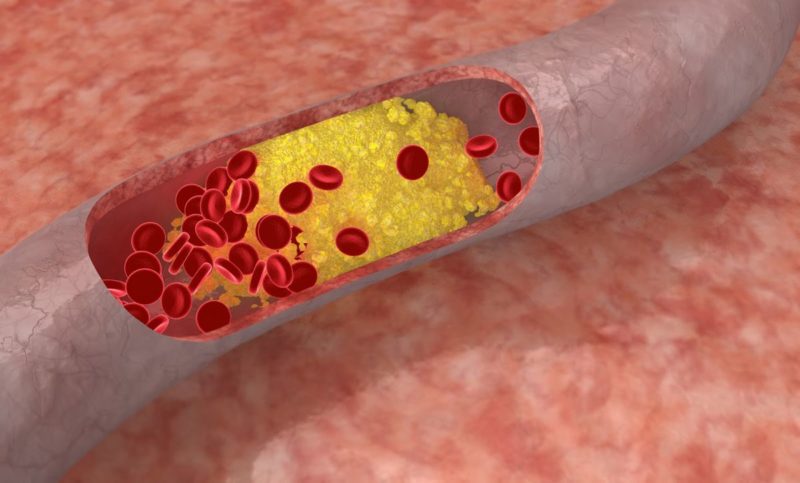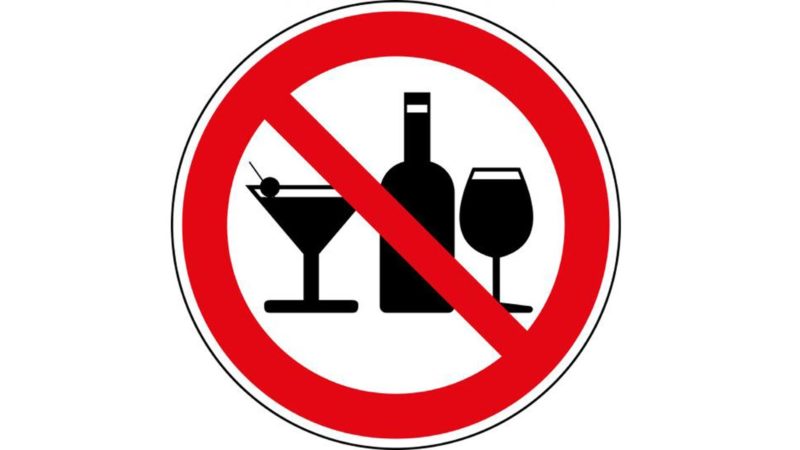Cholesterol is an important element for the production of hormones, vitamin D, and the normal functioning of the immune and nervous systems. But the excess rate of this substance leads to cardiovascular and other problems. What is “bad” and “good” cholesterol, the norm in women by age, is worth telling more about this.
Material Content:
What causes cholesterol in women?
Cholesterol is replenished from foods of animal origin. But this is only 20 percent. And 80 percent are produced by the body on its own. The rate of cholesterol in women changes over the years. It may decrease due to diets that exclude animal fats, which is also bad, as the production of female hormones is disrupted.

And it can increase, which is associated with various factors:
- pregnancy;
- overweight, regular overeating;
- smoking, alcohol;
- sedentary lifestyle;
- stress
- menopause;
- pancreas disease;
- pathology of the kidneys, liver;
- diabetes;
- prolonged use of hormonal contraceptives;
- chronic increase in blood pressure (hypertension);
- heredity.
Food plays a big role. Products with antioxidant properties contribute to an increase in "good" and a decrease in "bad" cholesterol.
By the way, “bad” and “good cholesterol” are not cholesterol at all, but substances transporting it to the cells of the body. There are two types of transporters - high density (HDL - “good”) and low density (LDL - “bad”). HDL carries cholesterol into the vessels, leaving no deposits.Excess cholesterol is simply excreted. LDL also transports the substance throughout the body. But when LDL becomes too much, cholesterol sticks in the vessels. Over time, cholesterol plaques, inflammation, and blockage of blood vessels are formed.
The norm of cholesterol for women by age
With age, the norm of cholesterol in the body of a woman changes upwards. But this is not a pathology if it does not go beyond what is permitted. Exceeding the permissible level in the blood can be accompanied by symptoms that are not associated with an excess of cholesterol: headaches, dizziness, heaviness in the legs even after a light load, the appearance of yellow spots on the skin, as well as around the eyes. Meanwhile, constant excess of cholesterol leads to strokes, heart attacks, coronary heart disease.
The norm of cholesterol is 40 to 50 years old

At a young age - up to 35 years in a woman, the level of cholesterol is more often normal, since it is controlled by the hormone - progesterone. Then progesterone becomes less and less, reproductive function fades, and the risk of increasing cholesterol increases. After 40 years, it is worth paying attention to nutrition, and at least twice a year to undergo a preventive examination. The norm in women after 40 years is considered to be from 3.9 to 6.18 mmol / L of "good" cholesterol and from 0.9 to 2.3 mmol / L of "bad". It is in this proportion that there is no risk of accumulation of fatty plaques in the vessels. That is, even if they begin to form, then “good” cholesterol removes them. Thus, a healthy balance is maintained.
For age 50-60 years

At this age, unfortunately, many ladies are gaining excessive weight. This in turn leads to a malfunction in the whole body. At the same time, cholesterol level rises. The norm in women after 50 is from 3.9 to 7.7 mmol / L. This is enough to prevent the formation of cholesterol plaques. Doctors advise eating less sweet, starchy and fatty foods at this age.
Read also: the norm of cholesterol in men by age in the table
After 60 years
At this age, the norm can be considered the amount of cholesterol from 4.4 to 7.8 mmol / L. And after 71 years - from 4.0 to 7.2 mmol / L. The body continues processes that lead to an increase in the indicator under discussion. You should adhere to proper nutrition, avoid stressful situations, move more and control cholesterol every 3-6 months.

By the way, in pharmacies you can buy a special device, for example, ACCUTREND PLUS, which allows you to determine the level of cholesterol in the blood. Then control will be easier. And if an excess is noticed, you can always adjust the diet, or consult a doctor for medical treatment. The device operates on batteries, the result is displayed after 180 seconds. The range of measurement of cholesterol is from 3.88 to 7.75 mmol / L. It also allows you to measure triglycerides, glucose, and lactates. The result can be judged by photometric analysis of the light reflected from the test strips. The device is not cheap, an average of 7 thousand rubles, so the expediency of buying the device is not justified for everyone.
Table of cholesterol content by age
The table shows how with age in women, the norm of cholesterol increases, which directly depends on hormonal changes closer to menopause and especially after its onset.
| age | total cholesterol | LDL | HDL |
|---|---|---|---|
| 30-35 years old | 3,37 – 5,96 | 1,81 – 4,04 | 0,93 – 1,99 |
| 35-40 years old | 3,63 – 6,27 | 1,94 – 4,45 | 0,88 – 2,12 |
| 40-45 years old | 3,81 – 6,53 | 1,92 – 4,51 | 0,88 – 2,28 |
| 50-55 years old | 4,20 – 7,38 | 2,28 – 5,21 | 0,96 – 2,38 |
| 55-60 years old | 4,45 – 7,77 | 2,31 – 5,44 | 0,96 – 2,35 |
| 60-65 years old | 4,45 – 7,69 | 2,59 – 5,80 | 0,98 – 2,38 |
| 65-70 years old | 4,43 – 7,85 | 2,38 – 5,72 | 0,91 – 2,48 |
| More than 70 years | 4,48 – 7,25 | 2,49 – 5,34 | 0,85 – 2,38 |
Decoding the result of a blood test for cholesterol
One of the surest ways to determine blood cholesterol is to use a biochemical blood test. The results are reflected in the lipid profile. Everything is taken into account: the concentration and presence of different types of cholesterol. This is total cholesterol, and the level of high density lipoproteins, low density lipoproteins, triglycerides, an atherogenic index.A biochemical blood test is used, which, unlike the general analysis, gives a complete picture of a possible violation in the body, more detailed and detailed indicators. Knowing the problem, you can choose the appropriate adequate treatment.

The following indicators are considered the norm of cholesterol in the blood of women:
- total cholesterol: 3.6-5.2 mmol / l, high: 5.2-6.19 mmol / l, a significant excess of more than 6.19 mmol / l;
- normal HDL: 0.9-1.9 mmol / l, and if the concentration of the substance is reduced to 0.78 mmol / l, then the risk of atherosclerosis increases 3 times;
- normal LDL: 3.5 mmol / L, and excess is over 4 mmol / L.
It is necessary to take tests in specialized laboratories to avoid errors in the results.
Time factors
Total cholesterol indicates the state of the vessels. This is a key indicator. There are norms, but it is also necessary to take into account features in which deviation from normal indicators is an objective factor.

For example, an increase in cholesterol can occur for temporary reasons:
- pregnancy
- colds;
- severe frosts;
- the first two days of the menstrual cycle.
Excess and lack of cholesterol
The peculiarity of age and gender is taken into account. In a strong half of humanity, the rate of cholesterol in the blood is always higher than in women.
Excessive cholesterol can indicate health problems such as:
- coronary artery disease;
- cancer tumor;
- infection;
- hypothyroidism;
- hepatobiliary system disease;
- congenital hyperlipidemia.
Low cholesterol indicates possible diseases such as:
- anemia;
- anorexia;
- cachexia;
- cirrhosis;
- infection;
- pathological changes in the kidneys and liver, etc.
Detailed analysis
The most dangerous is the increase in the level of low density lipids. In men, the limit values are from 2.3 to 4.7 mmol / L, in women - from 0.9 to 4.2 mmol / L. If there is an excess of the permissible concentration, then the cardiovascular system is under attack. There is a risk of atherosclerosis, coronary heart disease, angina pectoris, stroke and heart attack.
But high-density lipids should be normal. Exceeding “good” cholesterol also leads to various deviations in health. On average, for men, the norm is from 0.7 to 1.8 mmol / L, and for women, from 0.8 to 2.1 mmol / L. But again, age as well as time factors are taken into account.

Excess triglycerides contributes to the progression of atherosclerosis. Therefore, this indicator is also taken into account in a detailed analysis. In men, the rate is considered to be 3.6 mmol / L, while for the fair sex - 2.5 mmol / L. Higher rates in men are explained by the peculiarity of nutrition: the stronger sex requires more protein food.
Atherogenicity index shows the ratio of bad and good cholesterol in the blood. This is a very important indicator that indicates latent diseases that are asymptomatic up to a certain time. And also for the risk of getting a disease.
How to pass the analysis
Doctors recommend taking a blood test for cholesterol at least 1-2 times a year, if everything is in order with health. And more often if there are problems.

Before passing the analysis, it is recommended:
- do not drink alcohol the day before;
- do not eat for 5-6 hours;
- sleep well and relax;
- do not be nervous.
Proper analysis will not only determine the presence of the disease, but also the dynamics of treatment.
How to lower cholesterol
Diet for high cholesterol is the main treatment. Products such as mayonnaise, refined oil and margarine should be completely eliminated from the diet. Eat less fatty meats and fish. Cook more dishes of vegetables and fruits, add garlic, parsley to the diet, more often eat apples, grapes, oranges, tangerines.
Be sure to do exercises in the morning, even better - a run in the morning or evening hours.Avoid stress and emotional distress.
- Svetlana












